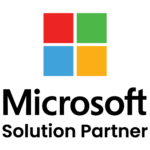
Rewards
.





CANADA
55 Village Center Place, Suite 307 Bldg 4287,
Mississauga ON L4Z 1V9, Canada
Certified Members:
.



Home » How to Use Docker Containers to Deploy Your Full-Stack Application

In the modern generation of software program improvement, deploying full-stack packages has grow to be more streamlined and green with the arrival of Docker bins. Docker for net builders gives a lightweight, transportable, and stable environment for deploying packages, irrespective of the underlying infrastructure. They encapsulate a utility and its dependencies into a single, transportable unit, making it simpler to set up Docker containers and control them throughout numerous environments. With Docker, builders can avoid the complications of “it works on my machine” issues, ensuring that the utility behaves equally in improvement, staging, and manufacturing environments.
In this blog, we can discover the step-by-step method of the use of Docker for improvement and deploying Docker containers to set up your full-stack utility, encompassing both the backend and frontend components. Whether you’re operating with a Node.js backend, a Python Flask utility, a React frontend, or some other stack, Docker network improvement affords a familiar technique to deploying software in a manner that is steady and reproducible. This technique is referred to as field-based deployment, because it guarantees that your application runs within the same environment irrespective of where it`s being deployed.
From a cloud Docker setup to Docker field deployment, we can guide you thru the vital steps of a way to set up a Docker field in specific environments. Deploying bins with Docker guarantees the equal configurations and dependencies are met, taking into account seamless Docker deployment throughout the development and manufacturing stages. By the end of this manual, you will have a stable understanding of a way to set up Docker, deploying Docker containers, and the great practices concerned in the Docker field deployment.
Now, let’s delve into the method of deploying Docker bins and a way to set up a Docker field on your full-stack utility, making sure an easy and green Docker set up workflow. Whether you`re trying to set up with Docker in a nearby development environment or getting ready your utility for a production environment, this manual will assist you in navigating docker development and make sure your deployments are flawless.
Before diving into the Docker field deployment technique, let`s first recognize the important things added by Docker. Docker for net builders is a device that programs an utility into containers, that are remoted from each other and the host system. A field includes the whole lot the utility desires to run, along with code, runtime, libraries, and dependencies. Docker photographs function as the blueprint from which containers are created. You outline your utility`s surroundings and dependencies in a Dockerfile, which Docker makes use of to construct the image for docker development.
With cloud Docker, you could set up programs throughout a couple of cloud platforms, making the technique of deploying containers easier. Whether you are using Docker for improvement or manufacturing, Docker guarantees consistency throughout environments. In Docker net improvement, Docker simplifies coping with dependencies and running a couple of offerings like databases or backend APIs without conflicts.
When you need to set up a Docker field, you could without difficulty push your Docker images to a registry and pull them into your production environment, allowing green Docker deployment. How to set up Docker programs includes pulling the image and running it as a container in any environment. Deploy with Docker lets in seamless field-based deployment, making sure that your app behaves the same way across Docker development and Docker install stages. This makes Docker set up a dependable technique for constructing and deploying programs with confidence.
Docker is an open-source platform designed to automate the deployment of programs in light-weight, transportable containers. It lets in builders to bundle an application and all its dependencies, which includes libraries, configuration files, and runtime environments, right into a standardized unit known as a box. These bins can then be run on any gadget that helps Docker, making sure that the software behaves continuously throughout unique environments, including development, testing, staging, and production.
A Docker box is a remoted environment that consists of everything required to run a piece of software. Unlike conventional digital machines (VMs), bins do not require a separate running gadget; instead, they proportion the host gadget`s kernel, which makes them more light-weight and efficient. Docker containers are quicker to begin and eat fewer resources in comparison to VMs, making them an exquisite choice for cutting-edge software development.
Docker works through defining the software`s surroundings through a document known as the Dockerfile, which outlines the base image to use, the setup of dependencies, and any configuration required for the software to run. Once the Dockerfile is written, builders can use it to construct a Docker image, which could then be deployed and executed as a box on any gadget with Docker installed.
Get free Consultation and let us know your project idea to turn into an amazing digital product.

Docker offers a wide range of benefits that have made it a favorite tool for developers and system administrators alike. Below are some of the most significant advantages:
One of Docker`s largest blessings is its portability. Containers are designed to run on any machine that helps Docker, irrespective of the underlying infrastructure. This approach that builders can construct an software on their neighborhood gadget after which set up it seamlessly to a checking out server, a staging surroundings, or a manufacturing server with out traumatic approximately surroundings differences.
Docker packaging containers encapsulate the whole lot the software needs, along with the operating system`s kernel, which removes troubles like “it works on my machine” that frequently arise in conventional development setups. By packaging software in a container, builders may be certain that it’s going to run consistently throughout any gadget that supports Docker, whether or not it is a developer’s laptop, a server in a data center, or a cloud instance.
Another key gain of Docker is its capacity to isolate programs and their dependencies from the host device and different programs. Each Docker field runs in its very own remoted surroundings, that means it has its very own record device, community interfaces, and system space. This isolation guarantees that the utility and its dependencies do now no longer intervene with different programs strolling at the identical device.
For example, if exceptional programs require exceptional variations of a library, Docker lets in you to run every utility in a separate field with the particular model of the library it needs. This makes Docker a effective device for heading off conflicts among programs and for making sure that every utility has the surroundings it calls for to feature correctly.
Isolation additionally improves security, as any vulnerabilities or troubles inside a field are contained inside that field and do now no longer have an effect on different components of the device. This is especially beneficial in multi-tenant environments, wherein a couple of programs or customers percentage the identical underlying infrastructure.
Another important advantage of Docker is that it allows you to isolate applications and their dependencies from the host system and from other applications. Each Docker container runs in its isolated environment, with its file system, network interfaces, and process memory. This isolation ensures that an application and its dependencies do not conflict with other applications running on the same system. For example, if two different applications require different versions of a library, Docker allows each application to run in a separate container that contains the specific version of the library it needs. This makes Docker a powerful tool for avoiding conflicts between applications and ensuring that each application has the environment it needs to function properly.
Isolation also improves security because any vulnerabilities or issues within a container are contained within that container and cannot affect the rest of the system, which is especially useful in multi-tenant environments where multiple applications or users share the same underlying infrastructure.
Docker ensures that applications run consistently across different environments by using containers. Since each container includes all the dependencies required for the application to function, developers can be confident that the application will run the same way in development, staging, and production environments.
This consistency is crucial in modern software development, where applications are often deployed to cloud-based infrastructure that may vary in configuration. Without Docker, developers could face issues when moving an application from one environment to another, such as missing dependencies, incorrect versions, or configuration mismatches. Docker removes these inconsistencies by providing a predictable runtime environment.
Additionally, Docker’s use of container images means that developers can version their application environments. If a bug is discovered or a new feature needs to be added, developers can create a new version of the container image and deploy it without disrupting the existing application.
Docker containers are much lighter weight and more efficient than traditional virtual machines. Unlike VMs, which require a complete operating system for each instance, containers share the kernel of the host operating system. This allows containers to consume fewer resources and make more efficient use of memory, CPU, and disk. Containers are fast to start and can be started or shut down in seconds.
This efficiency is especially important in cloud-based environments where infrastructure costs are based on resource usage. Running applications in Docker containers allows businesses to get the most out of their infrastructure and reduce the costs associated with running multiple virtual machines.
Docker`s containerization version additionally helps model manipulate, which lets in builders to preserve tune of modifications made to the software environment. Each time a new edition of an software is built, a brand new picture is created. These pix are saved in Docker repositories (which include Docker Hub), in which builders can get admission to preceding variations of the software and roll lower back to them if needed.
This model manipulate device makes it simpler to control software updates and guarantees that programs may be without difficulty reverted to a known precise state if something is going wrong. Developers can check new capabilities or configurations in remote packaging containers before committing them to production, reducing the risk of introducing bugs or breaking modifications.
Docker containers are lightweight and resource efficient, helping companies save on infrastructure costs. Containers enable higher application density. h. More containers can run on the same hardware, reducing the need for expensive infrastructure.
Additionally, Docker enables applications to run consistently across different environments, reducing troubleshooting, configuration, and deployment time, further reducing operational costs. Docker’s efficiency and scalability are also ideal for cloud-native applications, where organizations can scale infrastructure up or down as needed and pay only for the resources they actually use.
Docker additionally allows automation in software program improvement and deployment. Docker integrates with non-stop integration and non-stop deployment (CI/CD) pipelines, permitting builders to robotically build, test, and install programs. With Docker, builders can automate the manner of packaging their utility into boxes, pushing those boxes to repositories, and deploying them to manufacturing environments.
This degree of automation reduces guide intervention, hastens improvement cycles, and guarantees that programs are usually deployed in a constant manner. It additionally facilitates enhance collaboration among improvement and operations teams, permitting DevOps practices and fostering a way of life of non-stop delivery.
Docker has become an essential tool in modern software development because it allows applications to be packaged into containers, making them easier to deploy, scale, and maintain across different environments. Docker is easy to set up and supports a variety of operating systems, including Windows, macOS, and Linux. This guide will walk you through the steps to install Docker on your development machine and show you how to get started containerizing your applications.
Before you can begin using Docker, it’s important to install Docker Desktop on your development machine. Docker provides installation packages for Windows, macOS, and Linux, so regardless of your platform, you can easily get started. Here are the installation steps for each operating system:
To install Docker on Windows, you need to ensure that your system meets the prerequisites. Docker Desktop requires Windows 10 64-bit or later, with either the Pro or Enterprise edition. Additionally, your system should support virtualization and have the Hyper-V feature enabled. If you’re using Windows Home, you can install Docker Desktop with the WSL 2 (Windows Subsystem for Linux 2) backend, which allows you to run Linux containers.
Steps:
1.Download Docker Desktop for Windows: Go to the official Docker website and download the installer for Docker Desktop for Windows.
2.Run the Installer: After downloading the Docker Desktop installer, double-click on it to start the installation process. Follow the on-screen instructions, which may include enabling the WSL 2 feature if you are using Windows Home.
3.Enable Hyper-V and WSL 2: If you are using Windows Pro or Enterprise, ensure that Hyper-V is enabled. If you are on Windows Home, WSL 2 will be used for running Docker containers, which is enabled during installation.
4.Complete the Installation: Once the installation is complete, Docker will prompt you to log out and back in to complete the setup. After that, you can launch Docker Desktop from your Start menu.
5. Verify Installation: Open the Command Prompt and type the following command to verify that Docker is installed correctly:
Building Docker Images
Understanding Dockerfile
A Dockerfile is a script containing a series of instructions on how to build a Docker image. Each instruction in a Dockerfile creates a layer in the image, making images lightweight and fast to deploy.
Writing a Dockerfile for a Backend Application
For a Node.js backend application, a typical Dockerfile might look like this:
Writing a Dockerfile for a Frontend Application
For a React frontend application, a Dockerfile might look like this:
Creating Docker Compose Files
What is Docker Compose?
Docker Compose is a tool for defining and running multi-container Docker applications. With Docker Compose, you use a YAML file to configure your application’s services, networks, and volumes.
Writing a Docker Compose File
A Docker Compose file for a full-stack application might look like this:
Running and Managing Docker Containers
Building and Running Containers
To build and run the containers defined in your Docker Compose file, navigate to the directory containing the docker-compose.yml file and run:
docker-compose up –build
This command builds the images and starts the containers. Use the -d flag to run the containers in detached mode.
Stopping Containers
To stop the running containers, use the following command:
docker-compose down
Viewing Container Logs
To view the logs of a specific container, use:
docker logs <container_name>
Deploying Docker Containers to Production
Choosing a Hosting Provider
Several cloud providers offer managed Docker services, including:
1.AWS (Amazon Web Services) Elastic Beanstalk
2.Google Cloud Platform (GCP) Kubernetes Engine
3.Azure Kubernetes Service (AKS)
4.DigitalOcean App Platform
Deploying to AWS Elastic Beanstalk
1.Package Your Application: Create a ZIP file containing your Docker Compose file and Dockerfiles.
2.Create a New Application: In the AWS Elastic Beanstalk console, create a new application and choose Docker as the platform.
3.Upload Your ZIP File: Upload the ZIP file and deploy your application.
Deploying to Google Kubernetes Engine
1.Create a Kubernetes Cluster: In the GCP console, create a new Kubernetes cluster.
2.Deploy Your Application: Use kubectl to apply your Kubernetes manifests and deploy your application.
Deploying to Azure Kubernetes Service
1.Create a Kubernetes Cluster: In the Azure portal, create a new Kubernetes cluster.
2.Deploy Your Application: Use Azure CLI or kubectl to deploy your application to the cluster.
Deploying to DigitalOcean App Platform
1.Create a New App: In the DigitalOcean App Platform, create a new app and connect it to your GitHub repository.
2.Configure the App: Set up the services and deploy your application.
Share your project idea with us. Together, we’ll transform your vision into an exceptional digital product!

Docker containers have revolutionized the way full-stack applications are deployed, offering a consistent, portable, and scalable solution. Whether you’re using Docker for development or deploying Docker containers in production, Docker for web developers streamlines the process. Tools like Docker Compose simplify Docker container deployment, ensuring consistency across different environments. With cloud Docker, you can scale your applications effortlessly while maintaining environment parity. By understanding how to deploy Docker and following best practices for Docker deployment, you can optimize your workflows for container-based deployment. This approach ensures that your app runs seamlessly whether you’re deploying containers locally or in the cloud.
Docker is a platform that packages your application and all its parts into containers, making it run reliably anywhere.
While not essential for beginners, Docker helps prevent environment issues and makes collaboration easier. Consider learning it gradually.
Yes, Docker is free for personal use. Docker Desktop requires a paid subscription only for large organizations.
Docker primarily runs Linux-based containers. Windows containers can only run on Windows hosts with specific configurations.
Docker Hub is a public registry for sharing images, while private registries store your proprietary images securely within your organization.
By default, data in containers is lost when they stop. Use Docker volumes to persist data between container restarts.
Yes, Docker’s efficiency allows better resource utilization and can reduce server costs by running more applications per machine.
Most developers can learn Docker basics in 1-2 weeks, but mastering container orchestration and best practices takes several months.
No, most applications can run in Docker without modifications. You just need to create appropriate configuration files.
Yes, Docker supports all major databases but requires proper configuration for data persistence and performance.

In today’s fast-paced healthcare environment, every minute counts. Managing tasks like patient data entry, appointment scheduling, and compliance monitoring can overwhelm healthcare professionals.

The oil and gas industry works in some of the most challenging and most demanding environments on the planet. From offshore rigs to large refineries, the machinery and infrastructure that powers this sector is extremely important for the global energy supply chain. However, equipment failures can lead to costly downtime, security risks and environmental hazards

Dynamics 365 CRM for Financial Services is a specialized version of Microsoft Dynamics 365 Customer Relationship Management (CRM) tailored specifically for the financial services industry. It is designed to help financial institutions, such as banks, insurance companies, investment firms, and wealth management organizations, manage their customer relationships, streamline operations, and enhance service delivery.
.





55 Village Center Place, Suite 307 Bldg 4287,
Mississauga ON L4Z 1V9, Canada
.




Founder and CEO

Chief Sales Officer

🎉 Thank you for your feedback! We appreciate it. 🙌